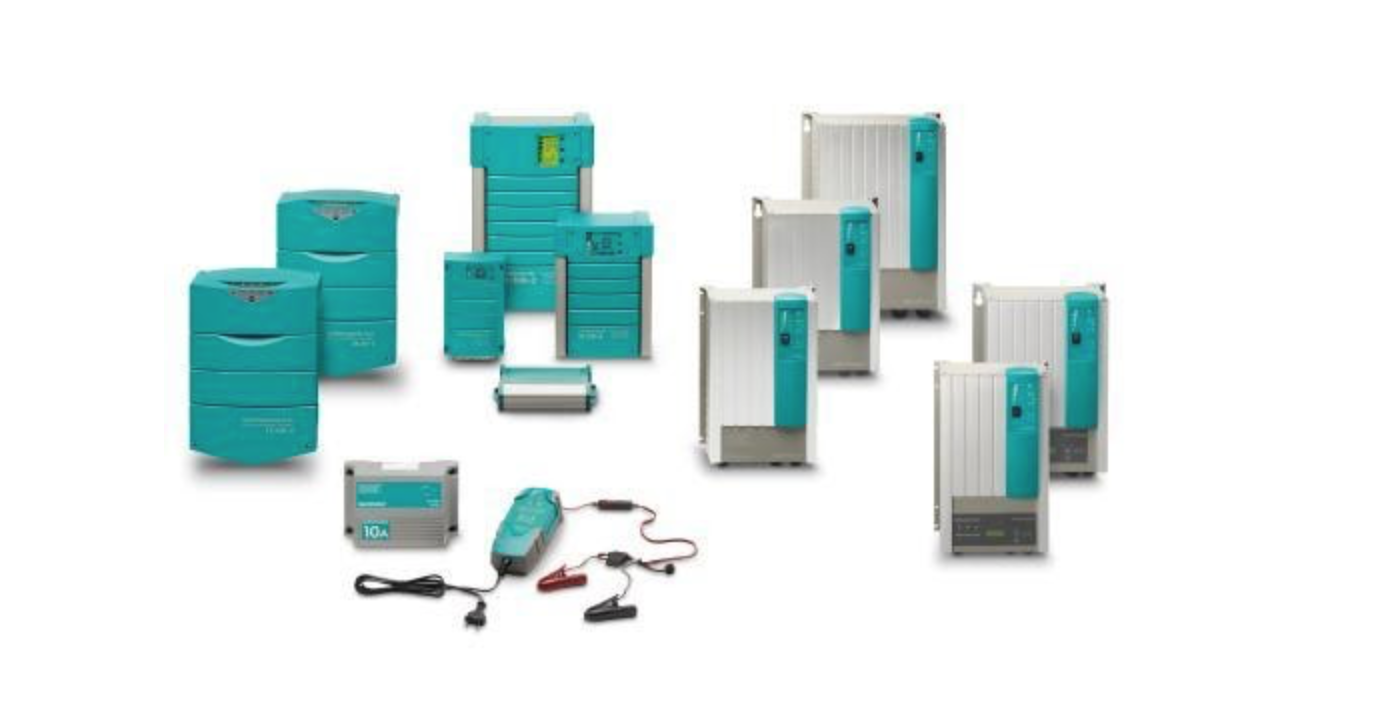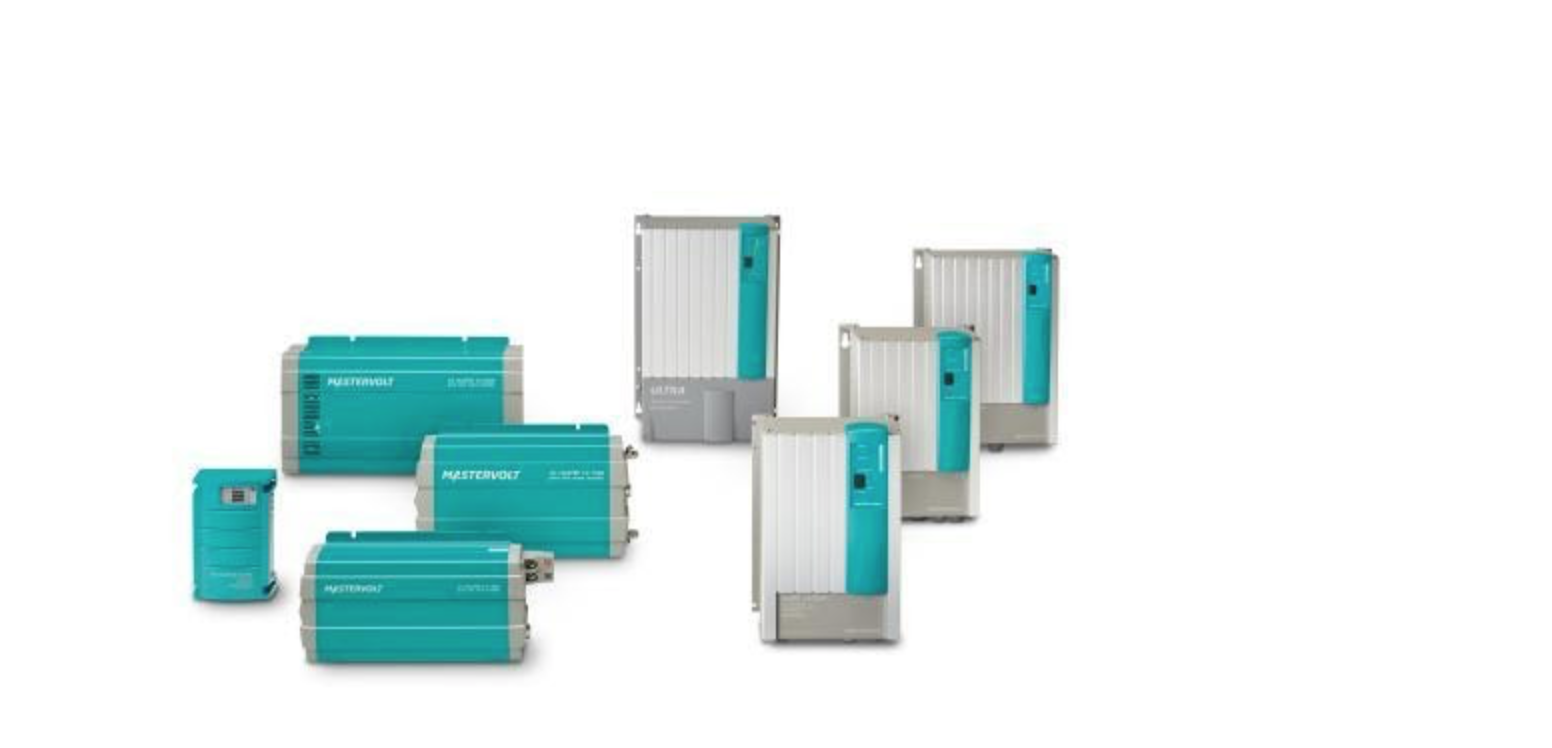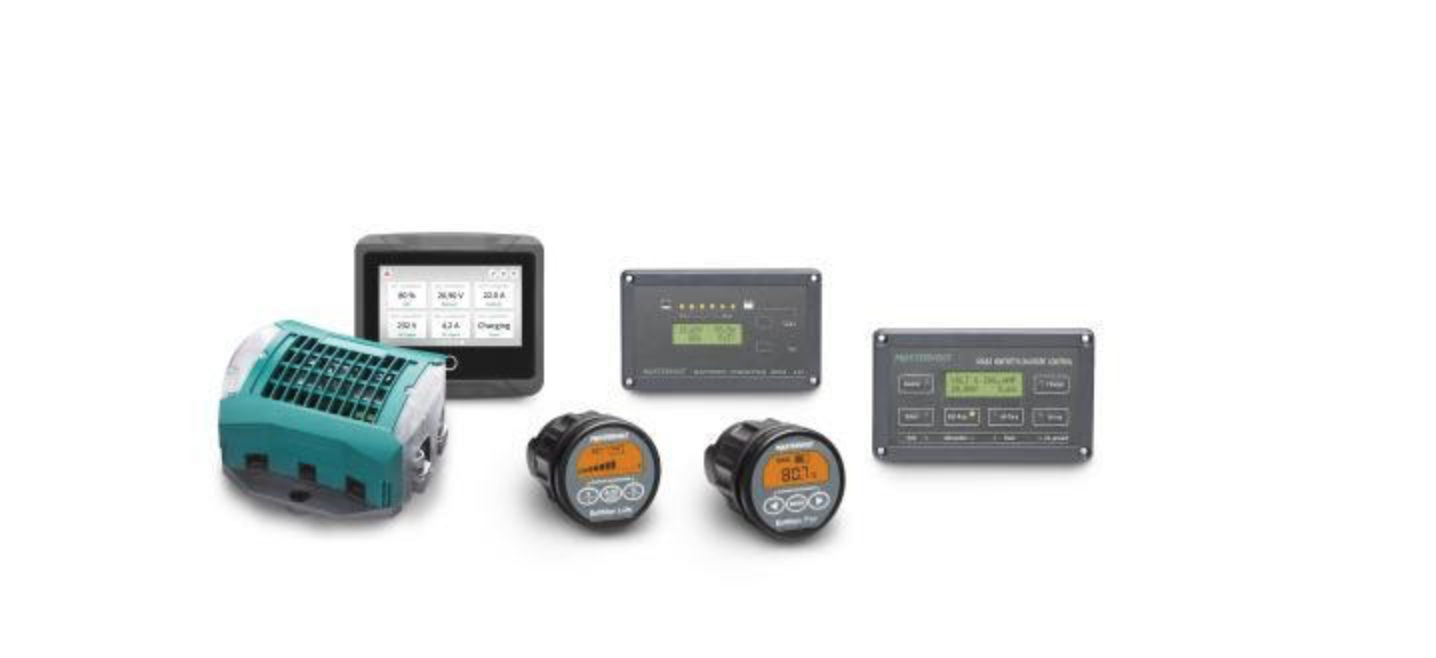DC SYSTEMS
THE BACKBONE OF EVERY VESSEL
Whether aboard a small tender or a cruise ship, all vessels rely on DC systems for many of their navigation, monitoring and control needs. Because of this, these systems need to be ultra reliable and well installed to ensure full functionality at all times. The last thing you need is your batteries to be flat and not know about it until its too late! But fear not! A new generation of electronics in the marine industry bring improved monitoring, automation and futuristic touchscreen controls to the masses.
All DC systems, no matter how complex, are built with a few central components and the specification of these determines the usability and the quality of experience on board. Equipment such as chargers powerful enough to fully charge the batteries without having to be dockside for days or an inverter that doesn’t overload every time someone turns the microwave on while the kettle is on! These are all things to take into account to ensure a pleasant experience on board any vessel. Contact the team at E-Touch Navcom today to help you stay recharged.
The main components of DC Systems are:
Batteries
Chargers & Alternators
Inverters
Monitoring & Distribution
Cabling
Batteries:
The foundation of any vessel’s DC electrical system, batteries must provide an adequate amount of capacity for the vessel’s requirements, (often described as Ah) until the battery bank needs to be recharged. There are many different types and construction of battery, each suited to a certain use; from the Mastervolt MLI Ultra24/5500 for ultimate discharge/recharge rates and smart operated controls via CZone & NMEA2000, to the Victron Tubular GEL 16 OPzV 2000 2v, capable of providing battery banks in excess of 2000Ah when connected in series. But with the increased capacity comes a serious increase in weight, so it is important to adequately specify capacity so you’re not either carrying dead weight or sitting in the dark!
Chargers & Alternators:
When a battery system becomes depleted, it requires recharging, usually by a battery charger or an alternator, although solar and hydro-charging are becoming more and more commonplace as the technology becomes more advanced and efficient.
Battery chargers are the main resource to recharge your marine system, taking their power from shore connections or on board generators. Battery chargers are capable of very high output currents today (the Chargemaster Plus 24/110-2 Czone is capable of delivering 110A output), minimising time spent with a noisy generator running or tied up to the dock, plugged into shore power.
Inverters:
While DC power is great for Navigation Equipment, it’s not going to power many of the consumer electronics on board, such as TVs, microwaves and hairdryers, which is where inverters come in. Whilst generators are designed to provide AC power to the vessel, inverters are capable of the same task, only taking DC energy from the battery bank and converting it to usable AC power, only this process is a lot quieter than a generator, also taking up less space, making it a popular alternative, specially on smaller vessels.
This is another part of the system that must be specified and sized according to the requirements of the vessel to ensure there is enough power available when required, including enough capacity in the DC batteries. Whilst most inverters now have overload protection, it can become irritating if an undersized inverter caused the power to reset frequently.
Monitoring and Distribution:
All this power comes with great responsibility, run the batteries flat and you’re stranded and hated by everyone on board. Luckily, today there is a plethora of gizmos and gadgets which give a clear indication of any or all of the main components of the system, from estimated time remaining till recharge, right down to battery temp and load balancing technology to ensure the maximum lifespan of one of the most expensive parts of the vessel.
Included in this equipment to make life easier and the whole system simple to manage are items like Automatic Battery Isolators to protect any damaging over discharge, touchscreen controlled distribution switches and even a full screen graphical representation of the vessels whole system, showing all charge & discharge and the current status of all connected equipment.
Cabling:
To ensure everything runs smoothly and the power is available where it’s needed, when it’s needed, cable sizing is very important. DC systems often require much larger conductors than what you may be used to with standard consumer electrics working at 230VAC, with 110mm2 cables being quite common for large battery banks and heavy duty inverters, even on smaller vessels.
All that power can be dangerous if not transported correctly, with marine grade cabling, tight, secure connections and waterproofing required throughout the installation.






